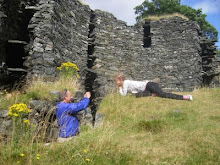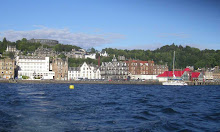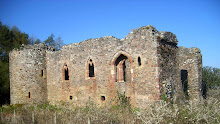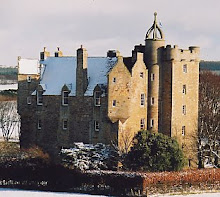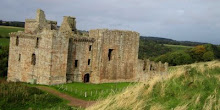WAY too many logos...
The white cockade, the white rose, rosebuds, blue bonnet, oak tree, acorns, oak sapling, star, thistle, birds, compasses, sunflower, moth, butterfly, JR VIII and 'Amen'.
Amen.
(Of course it is more difficult to get your marketing message across when you are a proscribed organisation.)
Did you know that ...?
- 'Amen glasses' (right) are so called as they were inscribed with
 the Jacobite version of the National Anthem which ends, 'Amen'. 'Amen glasses' are on display at Traquair and at Culloden Battlefield.
the Jacobite version of the National Anthem which ends, 'Amen'. 'Amen glasses' are on display at Traquair and at Culloden Battlefield. - Jacobites would toast the king at official dinners whilst passing their wine glass over water bowls to signify the Stuart king in exile, "over the water." This is why water bowls were banned at royal banquets until 1903.
"Fideles is Faithful Catholic Jacobites. Bethlehem is a common Jacobite cipher for England, and Regem Angelorum is a well-known pun on Angelorum (angels) and Anglorum (English). So 'Come and Behold Him, Born the King of Angels' really means, 'Come and Behold Him, Born the King of the English' - Bonnie Prince Charlie!"
So if you raise a festive glass this Christmas or sing a much loved carol, beware of being tacitly treasonable.
They're watching, you know.
Happy Christmas!

























































































